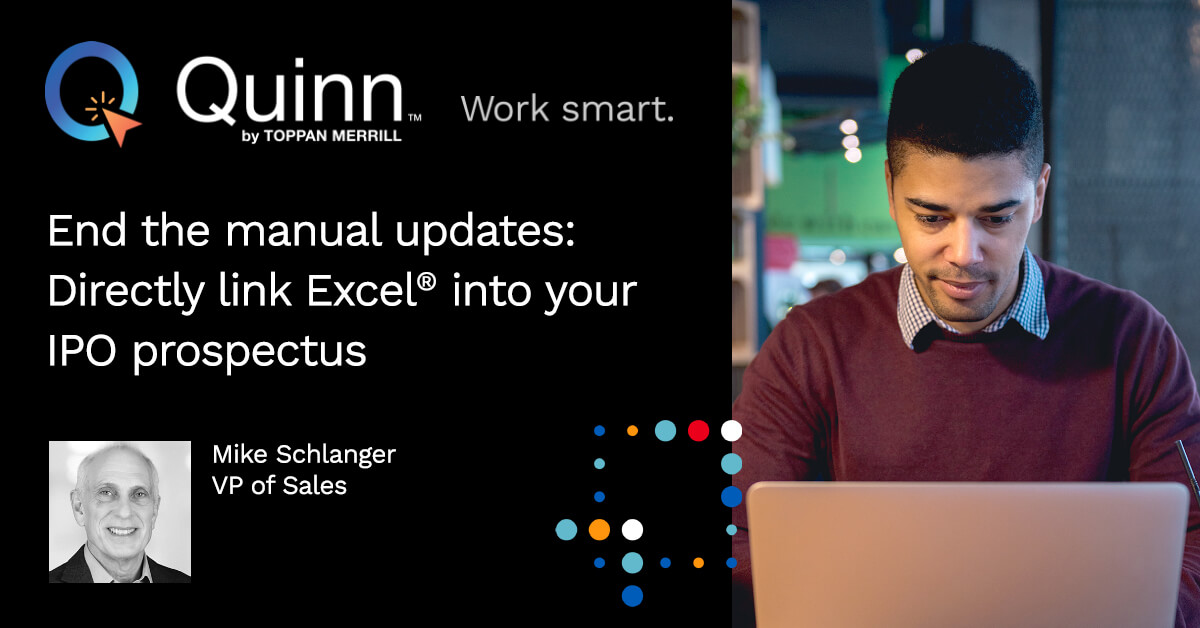Global capital markets continue to grow more complex and are accelerated by regulatory shifts and market disruptions. And while M&A transactions remain one of the most popular and high-potential ways for companies to create new growth opportunities, M&A deals are incredibly complex, with countless variables and moving parts.
Success is far from guaranteed. You need to know the road that lies ahead and surround yourself with seasoned M&A professionals. With dozens of projects managed each year globally, Toppan Merrill has experience with Capital Markets Transactions in every size, shape, sector and country in the world. Based on that knowledge, here are the essential steps of an M&A transaction. The process generally progresses through 8 steps which include:
- Business strategy and search criteria: The acquisition strategy can simply be thought of as the “Why are we doing this?” statement or rationale — the business purpose for doing a merger or acquisition which could include cost synergies, customer/geography expansion or new product acquisition. Your business strategy defines the ideal target criteria. Say for example your company is an established pharmaceutical company with a well-developed oncology sales force; you would likely be searching for a company with an oncology pipeline product rather than a company that has over-the-counter medicines. Consider all aspects like market segment, geographic region, size or demographics of customer base, and profit margins to narrow in on the ideal target.
- Assemble the team: M&A transactions are complex — and the right team can make all the difference. Identify internal team members that can help facilitate a smooth merger and acquisition outcome. Look for necessary external partners, including legal, investment banks, accounting firms, consultants and financial printing partners, with experience in M&A transactions. You’ll need support from the onset with the initial search, due diligence process, company valuations, negotiations, SEC filing and the all-important post-merger integration process.
- Hone in on the right acquisition target: Stick tightly to the search criteria and begin the hunt for the right acquisition/merger candidate. Once you’ve identified an acquisition candidate and they’ve expressed interest in your offer, you’ll work through initial discussions to lay out a strategic framework for how the transaction process will proceed.
- Valuation and negotiations: If discussions proceed smoothly, you’ll request financial information to evaluate the business valuation. Using the financials provided, you’ll draw up and present your initial offer to begin negotiations officially.
- Post-Merger integration: After the deal closes, the two entities officially begin the process of merging two organizations to achieve their target cost synergies, operational efficiencies and shareholder value.
Top reasons that M&A transactions do not realize their full potential:
- Poor post-merger integration planning. Changes in ownership can be stressful times for employees and uncertainty can negatively impact productivity, crush culture and cause employee flight. Start planning early on for employee communication.
- Insufficient or incorrect due diligence. You’re relying on data and information from the company you are targeting. Trust but verify that all information is fair and accurate.
- Overextending resources. Whether it be capital or human, M&A transactions require significant resources. Oftentimes more resources than ever anticipated. Plan for unexpected resource strains.
- Recognizing and bridging cultural differences. The phrase “No two individuals are absolutely alike” could be used to reference companies as well. Make sure to recognize commonalities and acknowledge differences to smooth the path toward integration.
Navigating the complexities of the capital market
Although this condensed eight-step overview may create an impression that M&A deals seem straightforward, we promise you they are not. M&A deals are incredibly complex, with countless variables and moving parts. Success is far from guaranteed. This is why companies increasingly turn to experienced external partners to provide consultative expertise in preparation for M&A events — and dedicated service through each step of the M&A lifecycle including guidance through all-important continued compliance with SEC regulation.
For more detailed information on the different transaction types, consult this resource: Guide to M&A Transactions: M&A Types, Examples and Process.
Learn more about how Toppan Merrill supports Mergers and Acquisitions here.



